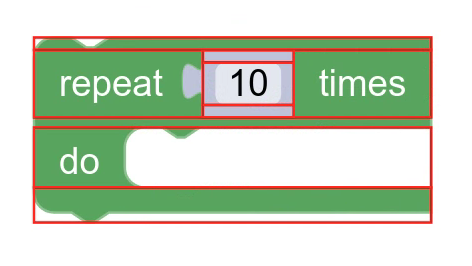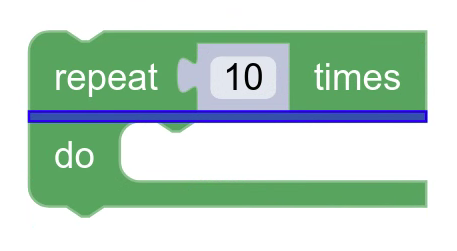Les blocs sont définis comme un ensemble d'entrées, mais les informations de rendu déterminent la manière dont ces entrées sont divisées en lignes et en lignes d'espacement.
Par exemple, lorsqu'un bloc est défini sur des entrées intégrées, il comporte moins de lignes que s'il est défini sur entrées externes. Il a le même nombre d'entrées, mais un nombre différent de lignes !

Ligne
Un Row est un ensemble horizontal d'éléments et d'entretoises qui ne se chevauchent pas.

Les limites d'une ligne sont déterminées par les limites des éléments et des espaces vides appartenant à cette ligne, de sorte que tous les éléments soient contenus.
Espace entre deux lignes
Un RowSpacer est un espace vertical vide entre deux lignes.

Les limites des espaces entre les lignes sont déterminées par les informations de rendu elles-mêmes. Après avoir mesuré toutes les lignes du bloc, les informations de rendu insèrent des espaces de la taille choisie entre les lignes.

